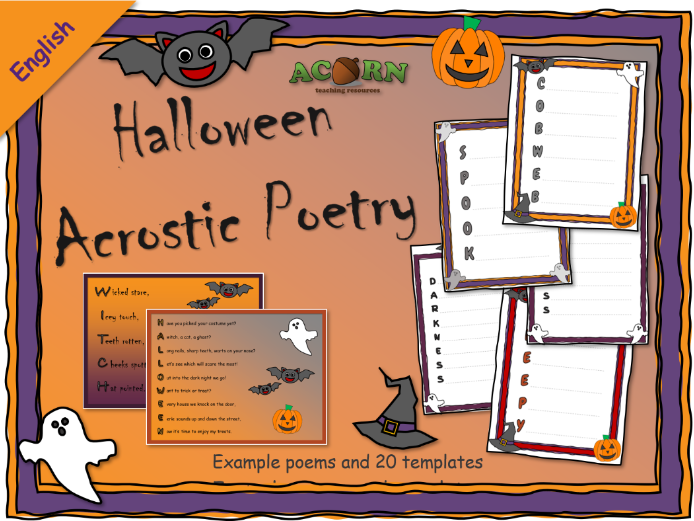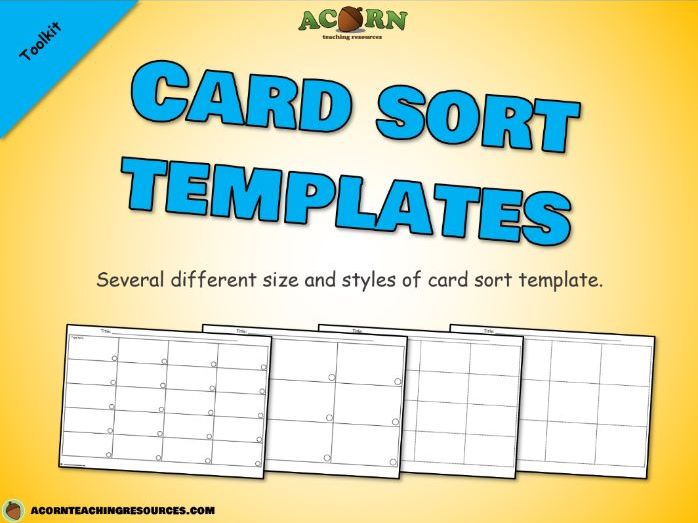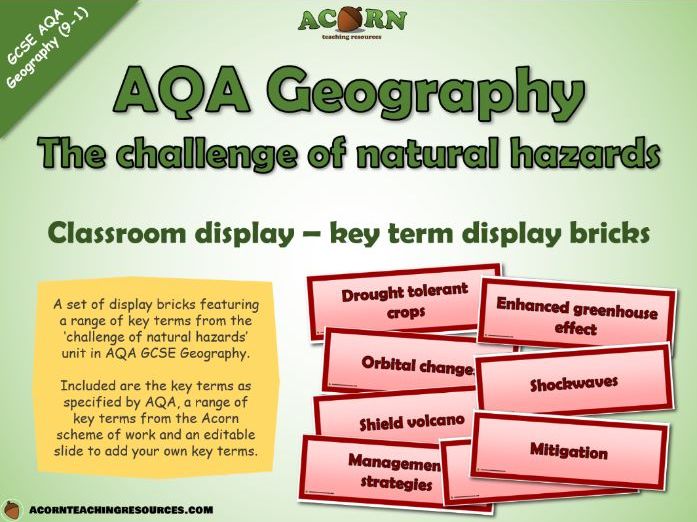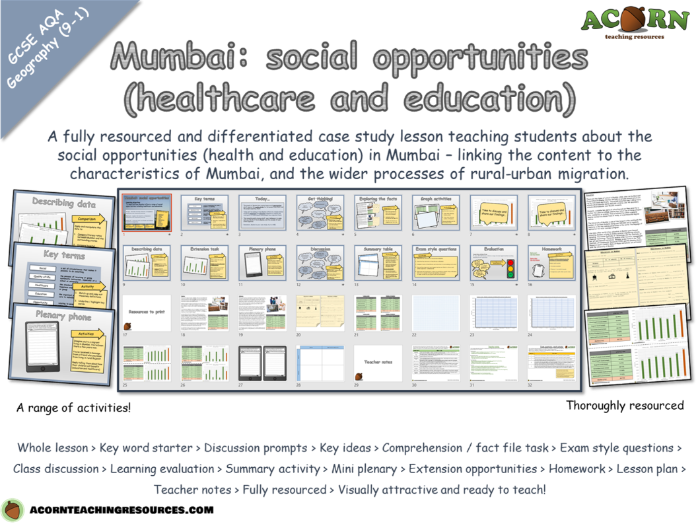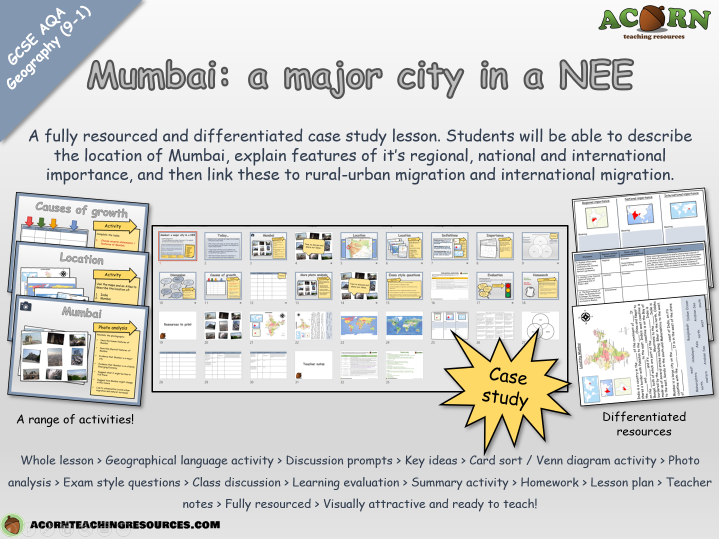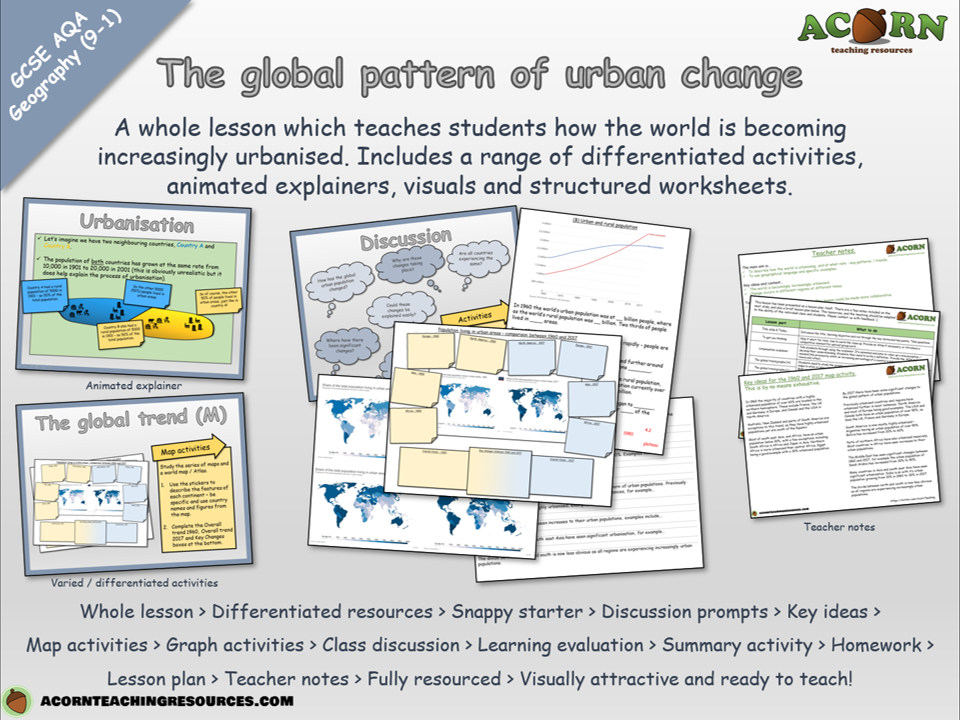103Uploads
138k+Views
51k+Downloads
All resources

Geography - Map skills - Direction
Geography - Map skills - Direction
A complete lesson with a range of activities and resources aimed at teaching students how to use direction as a geographical skill. Students will apply the skill in several different ways as well as develop their spatial understanding of Europe.
Complete lesson > thoroughly resourced and ready to teach > snappy starter > explainers > SPaG activity > practise questions > varied map activities > peer assessment > summary activity > teacher notes > lesson plan > lesson evaluation > homework
The main aim is…
For students to learn / apply skills in describing direction.
To develop a spatial understanding of Europe.
Key ideas and content…
There are 8 points to the compass (as far as we’re concerned for today anyway)
We use direction to describe location / journeying.
Direction can be used by many different people in different situations.
To differentiate…
Students could take turns doing the countries / cities activities and then swap to help each other.
One student in a pair could have the map or atlas and act as an expert.
Pair up students when doing the map work.
To extend…
Use an OS map of the local area, Google Earth, an Atlas or online mapping to explore places.
Use the homework template and a local map / online mapping to explore geographical features in the local area (using direction obviously).
Certainly use the CYO task and encourage students to think about how they can test understanding / get students to apply map skills beyond simply describing.
To assess…
The road trip / CYO activity is the main assessment point.
Class discussion and the summary activity will also show progress and allow you to assess understanding.
Bundle

ENGLISH - Acorn Halloween Activities
Included are two Acorn lessons / activities
Halloween Acrostic Poetry (usually £3)
Halloween Haunted House for Sale Adverts (usually £3)

Halloween Haunted House For Sale - Adverts
English - Halloween Haunted House For Sale - Adverts
A series of activities on the theme of advertising a haunted house. Included are several templates, animated resources, peer assessment sheets, teacher notes, discussion prompts, word mats.
This lesson will make a great end of term activity, and will create some attractive display work, as well as develop skills in persuasive writing.
Activity 1 - Give the students access to the adverts, either printed out or displayed on the board. Students should work to identify the features of the advert using the instructions on the slide. This could be done as independent, paired or group work. A carousel activity would suit this task, especially if other tasks are built into the carousel activity station. Each advert can then be displayed to possibly annotate on the screen / aid discussion.
Activity 2 - Work through the discussion prompts. Again, this could be done as independent, paired or group work and could be built into a carousel activity station. There is a printable prompt sheet for students to write on if appropriate.
Activity 3 - Students should use a dictionary / discussion to build up a bank of words. These can be added to a printable word mat. Again, this could be done as independent, paired or group work and could be built into a carousel activity station. There is the further option to built up a bank of starters & connectives, a pre-populated list has also been planned for weaker groups. Word mat is displayed to aid discussion / assess understanding.
Activity 4 - Students write up their own adverts using the templates provided and the work prior. This is suited to independent work, but could be done in pairs or groups. If previous activities have been completed as a carousel, this could be where students break away to work independently. Several templates have been provided, including one with blank ‘photos’ for the students who like to draw.
Activity 5 - This is the main assessment opportunity. A sheet has been provided, however assessment could be done in many different ways and built in to match school / class policy or routine.
www.acornteachingresources.com

Halloween acrostic poetry
Halloween acrostic poetry!
Included are 4 examples, 3 differentiated word mats and 20 templates (all in colour or B&W outline). There are also several completely blank templates.
These will make for excellent end of term work / display work.
www.acornteachingresources.com

Urban issues and challenges - Mumbai (urban challenges - water, sanitiation and energy)
Urban issues and challenges - Mumbai (urban challenges - water, sanitiation and energy)
A fully resourced and differentiated lesson teaching students about the challenges in providing adequate access to water, sanitation and energy in Mumbai.
Whole lesson > Photo analysis > Discussion prompts > Key ideas > Differentiated activities > Summary activity > Class discussion > Learning evaluation > Card sort activity > Key term starter > Homework > Lesson plan > Teacher notes > Fully resourced > Visually attractive and ready to teach!
The main aim is…
To explore the challenges in providing water, sanitation and energy in Mumbai (case study)
Key ideas and content…
There are serious social challenges in providing water, sanitation and energy.
Water and sanitation are linked to health and social well being.
People living in squatter settlements (because of rapid urbanisation and poverty) are less likely to have adequate access to amenities such as water, sanitation and energy.
Mumbai is a good example of a city where people don’t have adequate access to amenities such as water, sanitation and energy.
To differentiate…
Work through the card sort activity as a class.
Students could complete the discussion, linking activity and photo analysis in groups / pairs.
Pass the photo analysis around, students improve each other’s work.
To extend…
Students could form their own sentence starters (and share them).
To assess…
The photo analysis and the summary activity offer assessment opportunities.
Class discussion and evaluation prompts.
www.acornteachingresources.com

The Geography of Autumn
The Geography of Autumn gives students the opportunity to explore the interaction between people & environment and the Autumn season.
Students will apply atlas skills and explore interactions including: Autumn tourism, the impacts of global warming, animal migrations and cultural celebrations.
This is a structured and visually attractive lesson where the outcome is an informative piece of display work or a booklet. There are several ways the work could be completed over a range of time scales.

Card sort templates
Several different size and styles of card sort template.
www.acornteachingresources.com

Storyboard templates
Several different storyboard templates - ready to print.
www.acornteachingresources.com

Urban issues and challenges - Mumbai (managing urban growth - squatter settlements)
A fully resourced and differentiated lesson teaching students about the development of squatter settlements in the context of Mumbai. Students will link characteristics and conditions (including the informal economy) to wider geographical processes.
Whole lesson > Photo analysis > Discussion prompts > Key ideas > Storyboard activities > Photo analysis – progress check > Exam style questions > Class discussion > Learning evaluation > Visual explainers > Homework > Lesson plan > Teacher notes > Fully resourced > Visually attractive and ready to teach!
The main aim is…
To establish the key characteristics of a squatter settlement.
To explain how they develop and then evolve over time.
To explain the difference between the formal economy and the informal economy.
To link squatter settlements to geographical concepts; urbanisation, rural-urban migration natural increase
Key ideas and content…
Squatter settlements are areas of informal housing where an informal economy often develops.
They evolve and change over time.
There are unique social / environmental conditions with impact quality of life.
They form because of a rapidly growing population.
To differentiate…
Several activities are differentiated – use the resources accordingly.
Photo analysis tasks can be completed as a class / groups / pairs
For the exam questions give lower ability students – display the connectives and key terms.
The discussion can be completed as a class / group.
To extend…
For the exam questions give time for middle and higher ability students to decide on their own connectives and key terms.
Provide a photo of a squatter settlement prior to the lesson – ask students to mind map what they know about squatter settlements. Add to / improve at the end.
Higher ability could read the definition of a squatter settlement and then write their own.
To assess…
The exam questions should be peer assessed.
There are several exam questions throughout the lesson, any of these could be given a mark and assessed.
The discussion prompts allow for summative assessment.
www.acornteachingresources.com

Geography - key term bricks - The living world
A set of display bricks featuring a range of key terms from the ‘living world’ unit in AQA GCSE Geography.
Included are the key terms as specified by AQA, a range of key terms from the Acorn scheme of work and an editable slide to add your own key terms.
www.acornteachingresources.com

Geography - key term bricks - The challenge of natural hazards
A set of display bricks featuring a range of key terms from the ‘challenge of natural hazards’ unit in AQA GCSE Geography.
Included are the key terms as specified by AQA, a range of key terms from the Acorn scheme of work and an editable slide to add your own key terms.
www.acornteachingresources.com

Geography - Key term bricks - Urban issues and challenges
A set of display bricks featuring a range of key terms from the ‘urban issues and challenges’ unit in AQA GCSE Geography.
Included are the key terms as specified by AQA, a range of key terms from the Acorn scheme of work and an editable slide to add your own key terms.
www.acornteachingresources.com

Urban issues and challenges - Mumbai (social opportunities - water supply and energy)
Urban issues and challenges - Mumbai (social opportunities - water supply and energy)
A fully resourced and differentiated case study lesson teaching students about the social opportunities (water supply and energy) in Mumbai – linking the content to the characteristics of Mumbai, and the wider processes of rural-urban migration.
Whole lesson > Photo analysis > Discussion prompts > Key ideas > Storyboard activities > Photo analysis – progress check > Exam style questions > Class discussion > Learning evaluation > Summary activity > Homework > Lesson plan > Teacher notes > Fully resourced > Visually attractive and ready to teach!
The main aim is…
To explore how Mumbai offers social opportunities in the form of a water supply and energy provision
Key ideas and content…
There is a safe and reliable water supply in Mumbai (although it isn’t perfect)
There is a reliable energy supply in Mumbai
Water and energy improve quality of life
Access to water and energy is significantly better in Mumbai than in surrounding rural areas
Social opportunities drive rural-urban migration
To differentiate…
Discussion activities can be paired / completed as groups
Storyboard activities could be paired work
The card sort could be done together as a class
Peer assess / improve any of the activities
Model the ‘energy’ storyboard on the water format
To extend…
Higher ability students could write a letter / report about water and energy provision, instead of the storyboards.
Students could write a mark scheme for the exam style questions
To assess…
Use the exam style questions
Assess discussion prompts
The summary table could be an assessment opportunity
www.acornteachingresources.com

Urban issues and challenges - Mumbai (social opportunities - healthcare and education)
A fully resourced and differentiated case study lesson teaching students about the social opportunities (health and education) in Mumbai – linking the content to the characteristics of Mumbai, and the wider processes of rural-urban migration.
Whole lesson > Key word starter > Discussion prompts > Key ideas > Comprehension / fact file task > Exam style questions > Class discussion > Learning evaluation > Summary activity > Mini plenary > Extension opportunities > Homework > Lesson plan > Teacher notes > Fully resourced > Visually attractive and ready to teach!
The main aim is…
For students to explore how Mumbai offers better social opportunities in terms of healthcare and education to it’s citizens and people migrating there.
To apply specific information about healthcare and education in Mumbai.
Key ideas and content…
Mumbai offers social opportunities people cannot find in surrounding rural areas.
Healthcare and education are both much more accessible in Mumbai than in surrounding rural areas.
These opportunities drive rural-urban migration.
To differentiate…
Several resources have been differentiated so all students can take part in each activity.
Paired and group work might be appropriate for the graph work.
WAGOLLS and model answers for writing a comparison.
Peer assess the plenary phone, using something such as two stars and a wish.
To extend…
Students could remove the Mumbai hospitals from the Maharashtra state total, and explain the significance of this upon rural-urban migration. Essentially this further proves the point about access to healthcare because Mumbai props Maharashtra up in terms of number of hospitals.
Students could form sentences using the key terms from the starter.
Instead of the plenary phone, students could write a formal letter allowing for more detail and application.
Students could develop their own mark scheme for the exam style questions.
To assess…
Use the exam style questions or the discussion prompts.
The plenary phone offers a mini-plenary assessment opportunity.

Urban issues and challenges - Mumbai (population growth)
GCSE Geography - Urban issues and challenges -Mumbai (population growth)
A fully resourced and differentiated case study lesson. Students explore the pattern of Mumbai’s population growth and then use information to explain the growth in the context of rural-urban migration and natural increase.
Whole lesson > Visual mind-map activity > Discussion prompts > Key ideas > Graph activities > Photo analysis > Exam style questions > Visual explainers > Class discussion > Learning evaluation > Summary activity > Homework > Lesson plan > Teacher notes > Fully resourced > Visually attractive and ready to teach!
The main aim is…
For students to describe the scale of population growth in their NEE case study of Mumbai.
To explain the growth (link to rural-urban migration and natural increase) specific to Mumbai.
To understand how rural-urban migration and natural increase are driving urbanisation in their city
Key ideas and content…
Rural – urban migration drives population growth
Population growth drives natural increase
Most migrants are young (natural increase)
Mumbai is a dominant and important city which attracts migrants (rural-urban migration)
The growth of Mumbai can be explained by a series of events in the history of the city
Rural-urban migration and natural increase are linked
NEE’s are likely to experience rapid urbanisation / population grown in cities because of their socio-economic contrasts
To differentiate…
Use the differentiated resources as appropriate.
Include discussion prompts and time the lesson accordingly
To extend…
Students can peer assess / improve their exam questions or photo analysis answers.
Change/adapt the exam style questions
Students can develop their own questions with mark schemes.
Higher ability should be given the opportunity to link the statements about Mumbai to one another
To assess…
The photo analysis offers some assessment opportunity if a focus is given to linking concept/theory to what’s happening in Mumbai
The line/bar graphs aren’t suitable in terms of content, however as a skill they could be assessed for accuracy
The exam style questions offer a summative assessment opportunity for the lesson.

Urban issues and challenges - Mumbai (location and importance)
A fully resourced and differentiated case study lesson. Students will be able to describe the location of Mumbai, explain features of it’s regional, national and international importance, and then link these to rural-urban migration and international migration.
Whole lesson > Geographical language activity > Discussion prompts > Key ideas > Card sort / Venn diagram activity > Photo analysis > Exam style questions > Class discussion > Learning evaluation > Summary activity > Homework > Lesson plan > Teacher notes > Fully resourced > Visually attractive and ready to teach!
The main aim is…
To apply knowledge of Mumbai as a case study of a city in a NEE.
To locate Mumbai using geographical language and explain features of it’s regional, national and international importance.
To link features of reginal, national and international importance together.
To explain how features of regional, national and international importance drive urbanisation in Mumbai.
Key ideas and content…
Mumbai is a city in a NEE (India), experiencing urbanisation.
Mumbai is important (regionally, nationally and internationally).
These features drive urbanisation.
Physical and human features drive urbanisation.
To differentiate…
Several activities have differentiated resources.
Provide support / model answers for the exam questions.
Photo analysis, Venn diagram and table activities could be undertaken in groups.
To extend…
Access to the internet would allow students to find out more specific facts.
Students could overlay key features of Mumbai onto a map of the city / region.
To assess…
Photo analysis
Explain and link column on the table
Group discussion
Exam style questions
www.acornteachingresources.com

Urban issues and challenges - Urban trends in different parts of the world
GCSE Geography - Urban issues and challenges - Urban trends in different parts of the world
A whole session exploring how urban trends differ between HIC’s, NEE’s and LIC’s and the relationship with economic development.
Whole lesson > Differentiated resources > Key concept starter > Discussion prompts > Key ideas > Graph analysis > Annotated graphs > Class discussion > Storyboard activity > Learning evaluation > Summary activity > Homework > Lesson plan > Teacher notes > Fully resourced > Visually attractive and ready to teach!
The main aim is…
This lesson is really about exploring the world trends – particularly the difference between urbanisation in LIC, HIC and NEE countries. Reasons and explanation are picked up in lesson 4.
Key ideas and content…
There is a clear difference between levels of urbanisation in HIC’s, LIC’s and NEE’s
There is a clear correlation between GNI and levels of urbanisation
Urbanisation is occurring more quickly in LIC’s and NEE’s
Urbanisation has already occurred in HIC’s and has slowed down
Be careful with students confusing GNI per capita with GDP
Industrialisation (as a concept) and the effect of urbanisation
To differentiate…
Several resource are differentiated.
Provide support and scaffolding as appropriate
Blow up and print the graphs for a carousel activity
To extend…
Students could locate our HIC, NEE and LIC countries on a world map and annotate to show levels of urbanisation and GNI.
Students could use the GDP graph, and a blank world map to annotate levels of urbanisation / GDP in various countries around the world.
To assess…
The homework exam question could be used in lesson as an assessment
The summary activity will demonstrate understanding / progress
All or any of the graphs can be described / explained
www.acornteachingresources.com

Urban issues and challenges - The global pattern of urban change
AQA GCSE Geography - Unit 2 Section A - Urban issues and challenges - The global pattern of urban change
A whole lesson which teaches students how the world is becoming increasingly urbanised. Includes a range of differentiated activities, animated explainers, visuals and structured worksheets.
Whole lesson > Differentiated resources > Snappy starter > Discussion prompts > Key ideas >
Map activities > Graph activities > Class discussion > Learning evaluation > Summary activity > Homework > Lesson plan > Teacher notes > Fully resourced > Visually attractive and ready to teach!
The main aim is…
To describe how the world is urbanising, and at what rate - key patterns / trends.
To use geographical language and specific examples.
Key ideas and content…
The world is becomingly increasingly urbanised.
Change occurs in different regions at different times.
To differentiate…
Activities are mostly differentiated. This lesson could be made more collaborative in many areas to aid lower and middle ability students.
Model answers for higher students using L and M resources.

Urban issues and challenges - The emergence of megacities
AQA GCSE Geography - Unit 2 Section A - Urban issues and challenges - The emergence of megacities
An activity packed and differentiated lesson teaching students about the characteristics of a megacity, their growth and their location. Included is a wide range of resources which can be applied in many ways.
Whole lesson > Key concept starter > Discussion prompts > Key ideas > Map/distribution activity > Graph skills > Photo analysis > Exam style questions > Class discussion > Learning evaluation > Summary activity > Homework > Lesson plan > Teacher notes > Fully resourced > Visually attractive and ready to teach!
The main aim is…
To teach students about the characteristics of a mega city, their location, their growth (and reasons for it)
To link to key concepts such as urbanisation and migration.
Make it clear ‘world cities’ share many of the same characteristics – it’s the population, the magic number, which makes it a mega city.
Statistics and population data vary. For example, Paris has a population a little over 2 million, however, in some figures a wider area is taken into account. Make this clear to the students. The emphasis should really be on the growth (the emergence) of megacities in NEE’s.
Key ideas and content…
Mega cities have a population of over 10 million people.
They have similar characteristics – similar to those of world cities.
Their emergence is mostly in Asia and more recently, Africa. There is a pattern!
The number of mega cities has grown significantly over the last 50 years.
Rural-urban migration and natural increase are driving rapid urbanisation in LIC/NEE’s.
To differentiate…
Several activities have been differentiated already – use sheets as appropriate.
Discuss and model the exam style questions.
Allow independent / group thinking time for the discussion.
Provide the key terms as a checklist when answering questions.
To extend…
Students can add information / data to the maps.
The data could be presented in different ways.
Actual examples can be added to the photo analysis activity.
Students could develop their own mark scheme for the exam style questions.
To assess…
Use the exam style questions as an assessment opportunity.
Assess the distribution description to assess distribution questions.

Urban issues and challenges - Factors affecting the rate of urbanisation
AQA Geography
Urban issues and challenges - Factors affecting the rate of urbanisation
A whole lesson (possibly a double) which teaches students how rural-urban migration, and natural increase, is driving rapid urbanisation in LIC’s and NEE’s.
There are a range of activities, and varied resources to aid in the teaching. A visual explainer has been included. All resources are ready to go.
Whole lesson > Key concept starter > Discussion prompts > Key ideas > Card sort > Photo analysis > Exam style questions > Class discussion > Learning evaluation > Summary activity > Homework > Lesson plan > Teacher notes > Fully resourced > Visually attractive and ready to teach!




